Guest writer MATTHEW E BANKS explores M.R. James’ influence on modern horror culture
It is said that literature is the foundation of culture, and that many films have either made cinematic offerings from this literature or have ‘borrowed’ heavily from it.
For example, J R R Tolkien unwittingly created, almost single handily the fantasy genre and his style has been widely copied. Isaac Asimov single handily redefined the Science Fiction genre with his three laws of robotics. There is one author, whose influence is as strongly felt in both current literature as well as film despite few people knowing his work and that author is Montague Rhodes James.
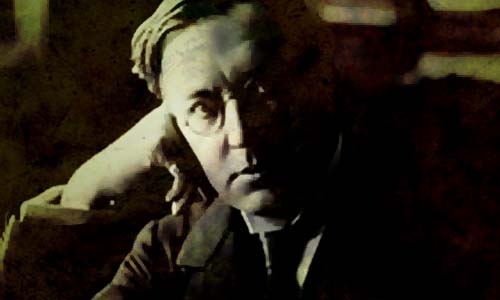
For example, both The Ring (2002) and Drag Me To Hell (2009), borrow heavily from his works – especially Drag Me To Hell, which is an unacknowledged remake of 1957’s classic Night of the Demon whose main premise is James’s 1911 short story Casting the Runes. Night of the Demon remains the only cinematic outing for any of his tales. (There was a badly made version called Shriek (US. Shrieker) in 1998, directed by Victoria Sloan which borrowed heavily on both Casting the Runes, and H R Wakefields’ He Cometh and He Passeth By, which is an imitation of James’s story.)
The Ring borrows heavily from Casting the Runes and The Treasure of Abbot Thomas. Despite remaining in the shadows, his influence remains as strong as ever, influencing such authors as Ruth Rendell, H R Wakefield, Ramsey Campbell; Mark Gatiss and with her 2010 novel, Dark Matter, Michelle Paver. Other than these examples, James’s work has been continually dramatized for both the radio and television since 1938, and since Christmas 2000, connoisseurs and ghost story fans have been treated to eight new M R James television dramatizations, two documentaries and approximately twelve radio dramatizations. Perhaps it is the way he uses the short story platform for his story telling rather than the novel that makes him so successful in this genre – so successful that he is considered the ‘Father of the Modern Ghost Story’ and that no ghost story anthology can be truly complete without one of his stories.
Who was Montague Rhodes James?
Montague Rhodes James, (or Monty to his friends), was born on August 1st 1862, the fourth child of Herbert and Mary James. He had a classical education at Eton and at King’s College, Cambridge, where he was awarded many prizes and scholarships. As well as publishing his ghost stories, he published many books on biblical, historical, and artistic subjects. He also published a children’s fantasy novel, The Five Jars in 1922, the only novel he ever wrote. From 1894 to 1908 he was Director of the Fitzwilliam Museum in Cambridge, and from 1905 to 1918 he was Provost of King’s College, Cambridge, and Vice Chancellor of the University from 1913 to 1915. In 1918, he became Provost of Eton. In 1930, he was awarded the Order of Merit. In 1936, his health deteriorated due to poisoning probably caused by his refusal to have a prostate operation and there is the possibility he may have suffered a slight stroke. Monty passed away peacefully on 12th June, the same date as his father, and his funeral was the following Monday.
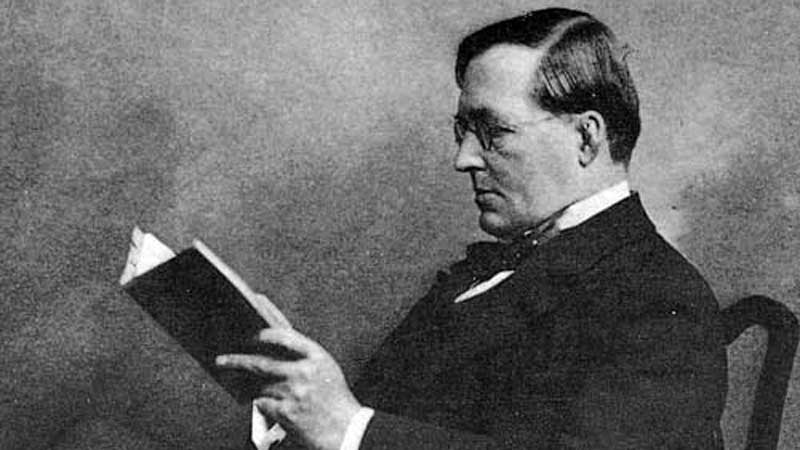
As with all his work, Monty strikes at your imagination by just giving you the bare essentials and leaves your imagination to fill in the gory details. In all his ghostly writings he relies on the genuine feeling behind it for the story’s effectiveness, and another factor which makes his work so captivating is the way he can bring life to his characters – making you believe and feel for them. Perhaps to some degree we can see ourselves reflected in them… a case of morbid curiosity that lies within us all! Whether Monty believed in ghosts is open to conjecture – saying: “Do I believe in ghosts: To which I answer that I am prepared to consider evidence and accept it if it satisfies me.”
Further to this, shortly before he died, Shane Leslie questioned Monty about his belief in ghosts: “I asked him what he really thought on the subject, since he had written better ghost-stories than any man living. He answered: ‘Depend upon it! Some of these things are so, but we do not know the rules!’” This was as far as he was prepared to go when discussing this subject. Though the writer Mary Butts speculated; “What is Doctor James writing about? What is a ghost story? … And why is it, as he has said himself, that no other subject has ever attracted him? While how is it that the ghost stories he has written are incomparable and unique; that he has found a formula for their telling more effective and like that of no other writer? … One thing can be said. Years ago, he found a magical receipt, and has spent his life in perfecting the use of it. With it he can raise the evil dead; summon the abominable familiars, whose place is just across the threshold of human life.”
M R James’ ghost-free ghost stories
Yet none of his supernatural writings are actually about ghosts. They are inhabited by demons, wraiths, vampires, and the darkest, blackest magic. But Monty did permit himself and us this warning: “Be careful how you handle the packet you pick up in the carriage drive; particularly if it contains nail-parings and hair. Do not, in any case, bring it into the house; it may not be alone.”
When it actually came to writing his ghost stories, Monty had very set views on what to use and not to use. In a 1929 article for The Bookman he sets out in two passages the suggestion of a definite standard. The first commends reticence:
… ’Maybe an elderly doctrine to preach; yet from the artistic point of view I am sure it’s a sound one. Reticence conduces to effect, blatancy ruins it; and there is much blatancy in a lot of recent stories. They drag in sex too; which is a fatal mistake; sex is tiresome enough in the novels; in a ghost story; or as the backbone of a ghost story; I have no patience with it.
At the same time don’t let us be mild and drab. Malevolence and terror, the glare of evil faces,’ The stony grin of unearthly malice’, pursuing forms in darkness; and long ‘drawn, distant screams’, are all in place; and so is a modicum of blood; shed with deliberation and carefully husbanded.”
A fine example of this can be found in The Tractate Middoth, where Monty is almost unsparing in his description of someone who has obviously been dead a long time being met by the hero among the more remote shelves of the Cambridge University library: “[sic] there was my parson again, back to me, looking at the books on the shelf I wanted. His hat was on the table; and he had a bald head. I waited a second or two looking at him rather particularly. I tell you, he had a very nasty bald head. It looked to me dry; and it looked dusty; and the streaks of hair across it were much less like hair than cobwebs.
Well, I made a bit of a noise on purpose; coughed and moved my feet. He turned round and let me see his face – which I hadn’t seen before. I tell you again; I’m not mistaken. Though for one reason or another I didn’t take in the lower part of his face; I did see the upper part; and it was perfectly dry; and the eyes were very deep-sunk; and over them; from the eyebrows to the cheekbone; there were cobwebs – thick. Now that closed me up; as they say; and I can’t tell you anything more.”
The second passage could serve as an encapsulated summary of Monty’s own approach: “The reading of many ghost stories has shown me that the greatest successes have been scored by the authors who can make us envisage a definite time and place; and give us plenty of clear cut and matter of fact detail; but who; when the climax is reached; allow us to be just a little in the dark as to the working of their machinery. We do not want to see the bones of their theory about the supernatural.”
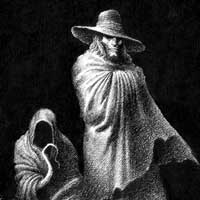
With this in mind; we find that Monty’s characters have an almost morbid curiosity and an overwhelming desire for knowledge – a desire that overshadows any warnings that they are given, until it is too late. For example, in Count Magnus, the character of Mr Wraxall is driven by a subconscious curiosity to see what is in the Count’s sarcophagus. On his way to the manor house, he finds that he ends up at the graveyard gates, mocking the spirit of the Count, taunting him to show himself: “It is curious” he notes “How on retracing a familiar path, ones’ thoughts engross one to the absolute exclusion of surrounding objects. I had entirely failed to notice where I was going, (I had planned a private visit to the tomb house to copy the epitaphs); when I suddenly, as it were, awoke to conscience, and found myself (as before), turning in at the graveyard gate, and, I believe, singing or chanting some such words as, ” Are you awake Count Magnus? Are you asleep Count Magnus?” and then something more which I have failed to recollect. It seemed to me that I must have been behaving in this nonsensical way for some time.”
Wraxall’s curiosity has led him into facing the Count’s wrath for this teasing / taunting. Despite fleeing from Sweden back to England – Wraxall doesn’t find sanctuary from the cowled figure of the Count. The horror is mounted by the fact that anyone Wraxall sees wearing a cloak and cowl or wide rimmed hat that covers the face could be the Count. For the Counts’ face is never seen. When Paxton in A Warning to the Curious steals a crown from its barrow – despite being haunted and hounded by an unseen entity, his fate is undeniably sealed. His desire and curiosity overtake his basic logic and though he tries to rectify his crime by replacing the crown, he still has to pay with his life – a high price to pay for curiosity. The same goes for Wraxall, for Baxter in A View from a Hill, for Lord Saul in The Residence at Whitminster amongst others, for if you delve too deeply, there is a price to pay.
The Casting of the Runes builds on growing horror
In Casting the Runes, Monty builds on the growing horror of inevitable doom. The villain is human and progresses from being a quasi-academic to a figure of deliberate and direct malevolence. Karswell, an evil warlock, has the unpleasant habit of cursing his unfortunate victims that he sees as having done something wrong to him, by passing them a slip of paper inscribed with runic symbols. Tension builds as the heroes race to give him back the paper, before they are consumed by a pursuing demon. There is one moment of almost gratuitous terror; the hero, Dunning, is made sleepless by a sound in his study; going out into the passage and leaning over the banister: “No light was visible; no further sound came; only a gust of warm, or even hot air played for an instant around his shins. (Then after returning to bed)… the electric light was off. The obvious course was to find a match; and also to consult his watch: he might as well know how many hours of discomfort awaited him. So he put his hand into the well-known nook under his pillow: it did not get so far. What he touched was, according to his account; a mouth, with teeth; and with hair about it, and, he declares; not the mouth of a human being.”
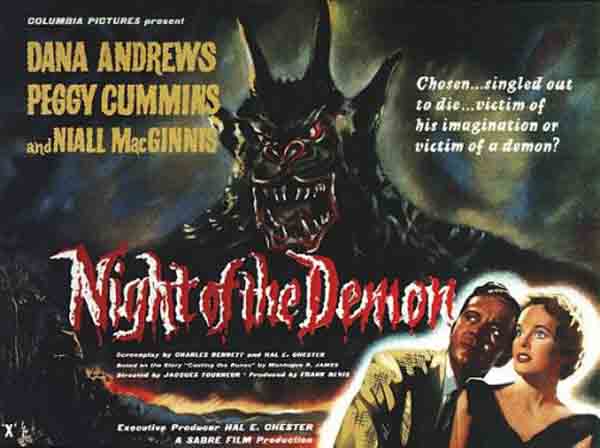
This story formed the basis for Night of the Demon and the dark atmosphere of the story is captured by the film especially in the performances of Dana Andrews as the disbelieving scientist Holden and Naill MacGinnis as Karswell, who (unlike his literary predecessor; who is truly malevolent), adds a new depth to the character by showing us that Karswell is just as trapped by the evil that he dabbles in, just as much as Holden; who he’s passed the runes to, is. In one scene in the film Karswell says to his Mother: “Well believe this also. You get nothing for nothing. This house, the land, the way we live, nothing for nothing! My followers who pay for all this, do it out of fear, and I do what I do out of fear also… It’s part of the price.”(sic) “’cause if it’s not someone else’s life, it’ll be mine, you understand Mother, it’ll be mine.”
The film really comes into its own with the presentation of the demon, which unlike many contemporary movie monsters lives up to its fearsome description. Originally the director Jacques Tourneur (Cat People 1942) had strong reservations about showing the demon but bowed to pressure from the film company. The film was a success at the box office and many film historians have labelled this film as the last great horror film. In 1985, the singer Kate Bush sampled this film for the title track of her hit album, The Hounds of Love. It is interesting to note here that Mary Butts said of this story, “The writer has an idea, from wholly different sources, that one part of this story is ‘founded on fact.’ The implication here is that Monty either dabbled in the occult or knew of someone that had. The only connection between Mary Butts and Monty is the occultist Aleister Crowley, who was at Cambridge whilst James was Provost and Vice-Chancellor. This is a tenuous connection as there is no direct evidence that they had actually met. Butts certainly believed that he had had an experience as she wrote, “It would not surprise me if once – and he will never own to it – he has met something uncommonly like the presence or the work of an evil spirit. Or that there has been but one episode in his life which gave him a psychic ‘turn,’ left an impress on his imagination. Even that someone underground once came up, and made him aware of it in no easy shape; and that this one encounter gave him the material for five books. Some experience, apart from his immense scholarship, he must have had [ ]” Butts further speculates, “Or is it also possible that the belief and the experience in some old book came through and stamped itself on him and persuaded him.” Here Butts may have a point as there are more than a couple of stories where Monty uses this concept as the basis. For example, both in The Tractate Middoth and The Uncommon Prayer Book have vengeful ‘guardians,’ in The Ash Tree the bible gives warnings when characters draw the Sortes, in Count Magnus a book informs Wraxell as to the nature of the Count, and in Lost Hearts it is a book that inspires Mr Abeny to commit his murderous crimes. Finally, and going back to Monty’s first published story, Canon Alberic’s Scrapbook, we have a character, Denniston, who Monty based upon himself, whose curiosity is roused when he is told about a ‘scrapbook’ – despite having an idea that the book is ‘protected.’ If Butts’ hypothesis is correct, then is Monty acknowledging this in his writings? In 2003, BBC Radio 4 broadcast a radio play The House at World’s End by Stephen Sheridan in which the basis for Monty’s interest in the supernatural was born via a book!
M R James’ later years
In his later years Monty’s production of ghost stories slowed down. There were only three or four stories or parts of stories that were written between 1925 and 1931; and these were produced for Eton ephemerals: There Was a Man Dwelt by a Churchyard, Rats, and, After Dark in the Playing fields. Of these three pieces, the second, Rats is a fine piece in the vein of the very earliest stories. In 1931, these three stories (plus Wailing Well, which was written, to be read by the Provost to the Eton Troop boy scout camp in July 1927;) were added to the four earlier collections to form the volume of collected ghost stories, which has remained in print continuously ever since. Although the latter pertains to be The Complete ghost stories of…, it is, in fact missing Monty’s final three published stories: The Experiment (1931), The Malice of Inanimate Objects (1933), and the posthumous, A Vignette (1936).
With just five publications – Ghost Stories from an Antiquary (1904), More Ghost Stories from an Antiquary (1911), A Thin Ghost and Other Stories (1919), A Warning to the Curious (1925), and The Collected Ghost Stories of M.R.James (1931), his reputation as a writer of supernatural fiction was firmly assured.
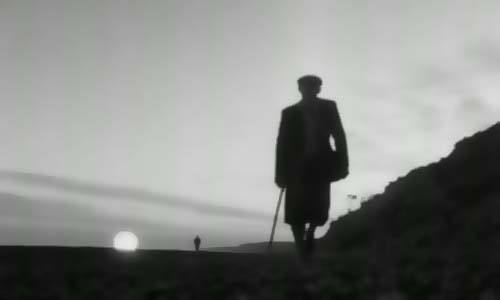
In Stories I Have Tried to Write, Monty makes mention of several stories or drafts of stories that he had tried to write but had lacked that something special and had been relegated to a drawer. The first of these being: Marcilly – Le – Hayer, which is just a story outline. Then we have the “Two students of King’s’ plot”, which is a complete manuscript, now titled The Fenstanton Witch. Rosemary Pardoe, editor of Ghosts & Scholars has found and published seven previously unknown manuscripts and story outlines by M. R. J. These being Marcilly – Le – Hayer (Ghosts & Scholars # 22), The Fenstanton Witch (Ghosts & Scholars # 12), A Night In King’s College Chapel (Ghosts & Scholars # 7) and finally John Humphreys (Ghosts & Scholars #16.) This piece is a long and incomplete manuscript, which can be seen as a fore runner to Mr Humphreys & His Inheritance, although only one scene from this draft was adapted for use in the published tale, and I suppose there are a few other similarities. The story drafts of Marcilly – Le – Hayer, The Game Of Bear, Speaker Lenthall’s Tomb, Merfield House and the incomplete John Humphreys show a fascinating insight into how Monty wrote his stories – where he began and of what ideas ran through his mind as he wrote the stories. John Humphreys has some brilliant ideas that he never used anywhere else. The Game Of Bear and Speaker Lenthall’s Tomb both end before anything supernatural happen, which is a great shame, as you are left wondering what might have happened, and there are two versions of Merfield House. The first piece takes place in Merfield Hall and the second has the title Merfield House. As to why Monty relegated The Fenstanton Witch to the drawer is beyond me. It is well constructed and like his earlier work, holds the reader to the page, and for that reason I cannot understand why he didn’t like it. His description of the demon is as detailed and excessive as that featured in his earlier short story Canon Alberic’s Scrapbook:
It was the figure, one would say, at first sight, of an enormous bat, with folded wings and hints of head approaching the human form. In a short moment, Hardman caught sight of the folds of wrinkled skin or hide that hung down from the cheeks, of the wide ears which shone transparent in the moonlight, and of the two lines of dusky red fire which marked the almost closed eyes.
A Night in King’s College Chapel, is a short piece that is not a ghost story as such, but the tale of what the characters in stained glass windows get up to at night. What came as a surprise was the fact that this piece was humorous rather than scary and shows a new depth to Monty and his work. These three drafts were published in a companion to Ghosts & Scholars, titled, The Fenstanton Witch and Others. M R James in Ghosts & Scholars. Unfortunately, to date these drafts have not been anthologised, although there is a two-book set of Monty’s complete supernatural fiction available from Penguin books.
With so much originality in his work, and despite some absolutely brilliant radio and television productions it is amazing that not more films have been made of his stories, rather than his ‘influence’. It’s a shame; after all, Poe and Lovecraft whose work bears much in common with James, have both had numerous films based on their writing. Let’s hope that in the future this will be rectified, and more people can enjoy his pleasing terror.
MATTHEW E BANKS is a graduate of University of Plymouth. He lives in Cornwall with his wife Sam. Matthew’s main fields of interest are the supernatural in all its manifestations, horror film history and the ghost story genre.








Amazing writer…it’s a shame his anthology lacks some tales.
Hi there Steven, there is one anthology ‘Curious Warnings The Complete Ghost Stories of M R James’ – which has all of James’ stories. It is edited by Stephen Jones and published by Jo Fletcher Books (2012). It has a bit of controversy around it as Mr Jones decided to correct James’ punctuation in places as Jones states in his introduction, ‘…I have elected, for this new edition of M R James’ work, to re-punctuate his fiction for a modern audience.’ The book is available on Amazon btw Hope that this helps